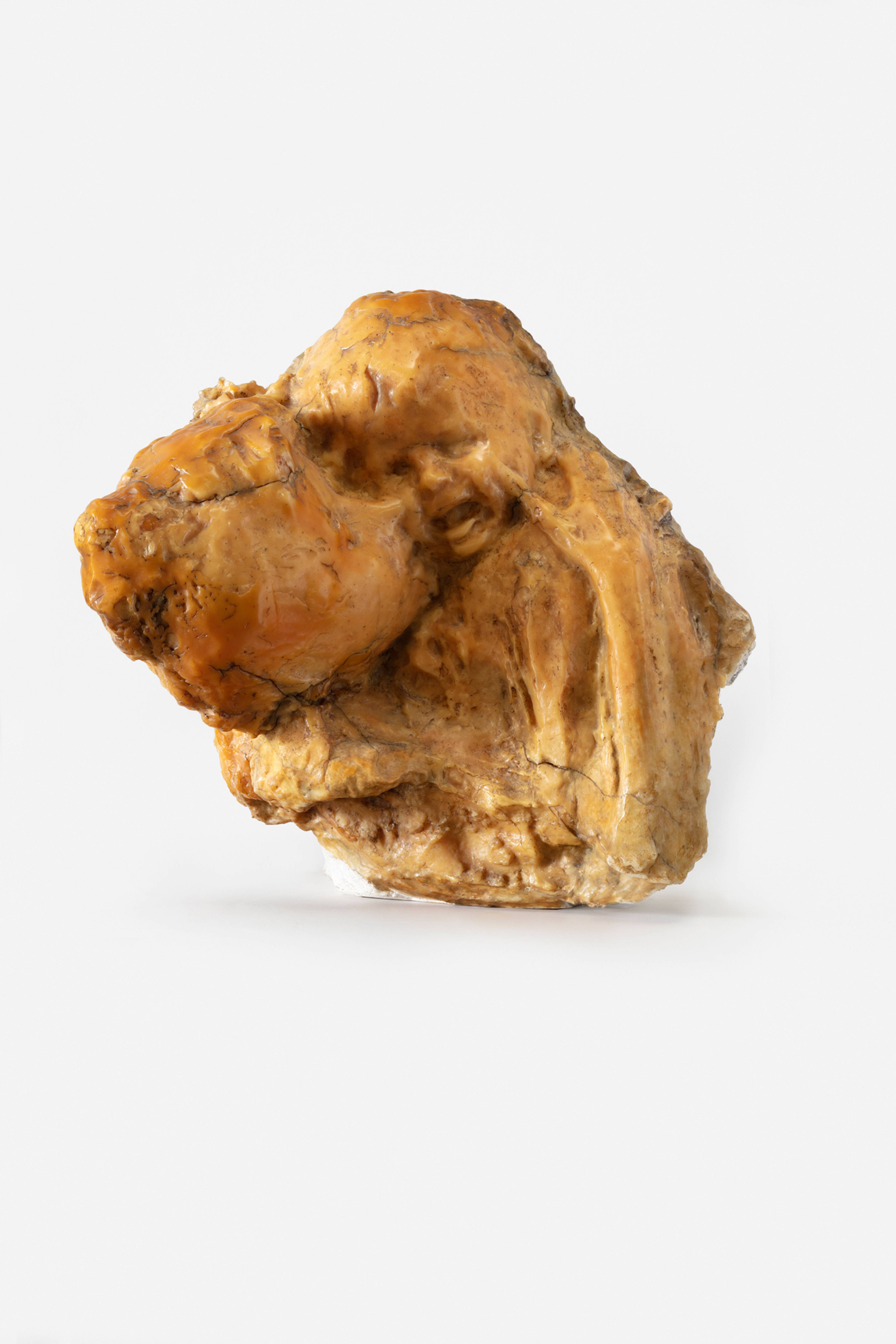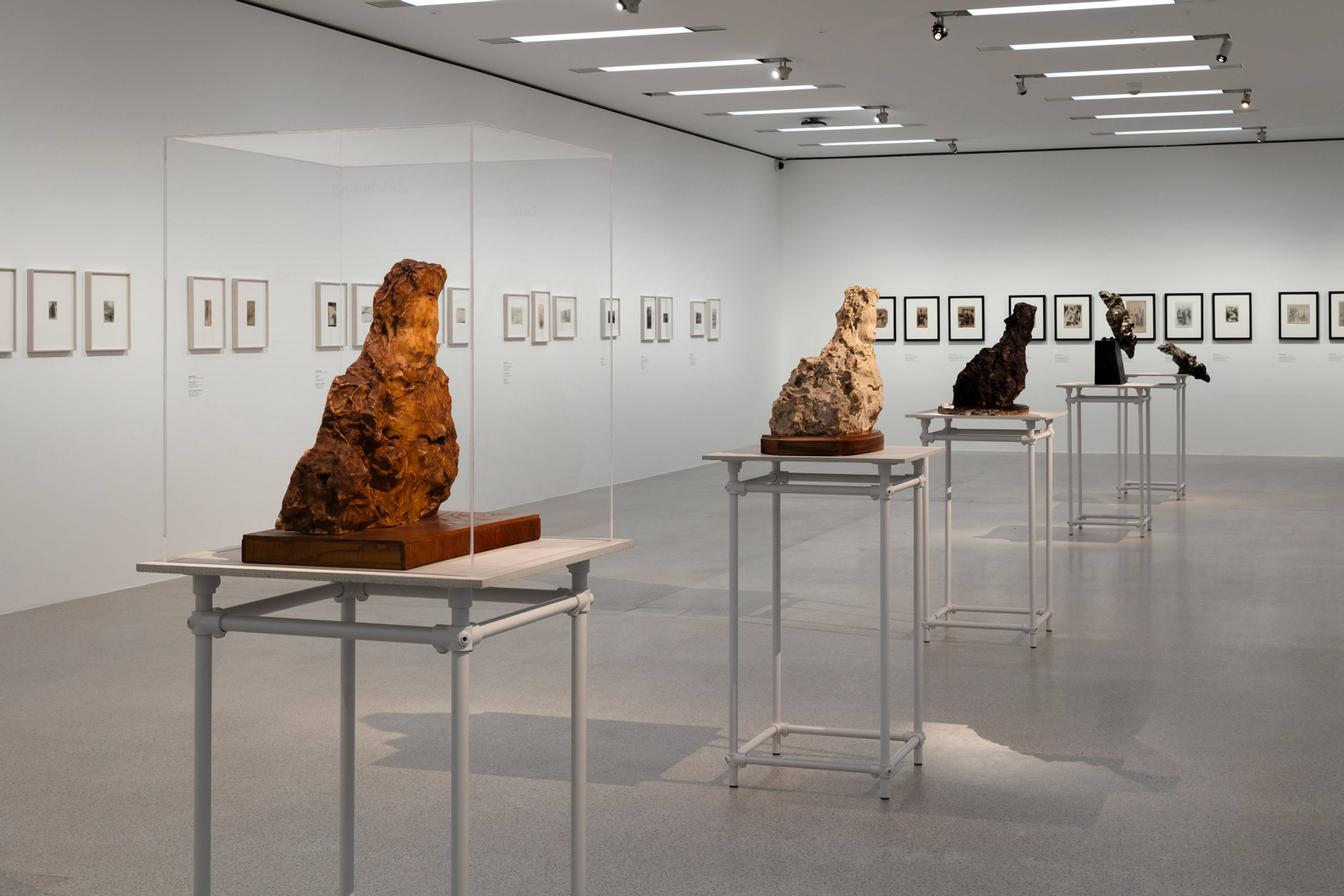With the exception of a brief year of study at the Accademia di Brera in Milan, Medardo Rosso (1858–1928) was largely self-taught and lived permanently in Paris from 1889. He approached the static medium of sculpture in a distinctly “modern” way, attempting to “bring it to life” and transform it into a performative and relational process. It is this approach, in particular, that makes Rosso interesting to us today. His works seem to evaporate before one’s eyes, as if they wanted to elude any scrutinizing gaze. Now, mumok is dedicating a major retrospective to this Franco-Italian artist – nothing less than a sensation, and one that offers the chance to (re)locate one of the great pioneers of early modernism.
For a long time, Rosso was known only to a small circle of experts. Art historians refer to him as the rivalrous “little brother” of Auguste Rodin, while for practitioners, he remained an “artist’s artist” – loved but rarely acknowledged. This is partly because his “figurative” objects are elusive; his limited range of subjects generated few iconic “images.” mumok’s presentation is a highly inclusive overview of that work, featuring over fifty sculptures and a large selection of photographs, photo collages, and drawings, all centered around Rosso’s own highly iterative, recapitulative thinking. Time and again, we see models and variations in different media, métiers, and formats, fruits of a lifetime of experimentation with these approaches, focused less on the motif itself than on process and, above all, impact.
Views of “Medaro Rosso: Inventing Modern Sculpture”
The show begins on the ground floor with photographs that Rosso took of his works, which he often further distorted by cropping or re-photographing, as though to test different perceptual effects. Behind a semi-transparent room divider (exhibition design by Walter Kräutler and Florian Pumhösl), we encounter a representative “sample” of his sculpture. These are mostly small busts, heads, or torsos that shimmer in warm tones – waxy yellow, earthy terracotta, metallic bronze. He often worked with “poor materials” like plaster or wax – never with marble or, for that matter, any other stone.
The complexity of these works is also evident in the display vitrines, which Rosso, placing great importance on the presentation of his objects, designed and built himself. The strange houses, which he called “cages,” lead into a second exhibition space on the upper floor, where juxtapositions with fifty newer works contemporize his sculptures. His mother-and-child group, Aetas aurea (Golden Age, 1885–86), for instance, is placed alongside Child Devoured by Kisses (1999), a tangle of textile body parts in an oversized frame by Louise Bourgeois, who designed similar cases for her “imprisoned” figures. Nearby, a remarkable photo series by Phyllida Barlow shows painted assemblages of bricks or foam mattresses (Photographs of Touchpieces, 1982–83/2024), the objects’ lost appearances reaching out to the frequent distortions and disguisings of material in Rosso.
Bambino malato (Sick Child), 1895, plaster, 17.5 x 20 x 19.3 cm
Enfant au soleil “Meek” (Child in the Sun, “Meek”), 1892/1918, wax over plaster, 37.5 x 26 x 24 cm
If such pairings of historical and contemporary works often seem arbitrary, easy, or trite, here, they are convincing, not least because Rosso himself frequently exhibited in dialogue with contemporaries like Rodin. About half of the artists involved have directly referenced Rosso, among them Barlow and Robert Morris (whose large, untitled sculpture from 1974 is an undulation of metal-mounted felt). But there are also compelling works by Alina Szapocznikow, Paul Thek, John Chamberlain, Eva Hesse, and Senga Nengudi, whose less direct correspondences with Rosso are mostly plausible; more important, though, is that many of these works are atypical of their artists, some of which are making rare or even debut exhibitionary appearances. See: a wooden beam laid on the floor with ten burning candles, a Richard Serra sculpture apparently “forgotten” at the Stedelijk Museum in Amsterdam (Candle Piece, 1968).
One of the central themes of the exhibition is the antagonism between representation and anti-representation, a duality that Rosso tested like few other artists of the early 20th century. His depictions of “unheroic” figures – an anonymous bookmaker on the street, a female janitor, a “child in the sun” – yield an impression of him as a keen, compassionate observer of everyday life. Indeed, he identified as an anarchist, and even named his son Francesco Evviva Ribelle (roughly “Francesco, Long Live the Rebel”). What else is worth gleaning from his biography? That he threw eccentric “performance parties” in his Paris studio, where he demonstrated his concept of how a sculpture is created by working in real time – a sensation in his own day. Moreover, that he lost his friendship with Rodin to Balzac (1891–97; visible here in two stunning moonlit photographs made in 1908 by Edward Steichen), whose towering namesake’s gentle, backwards grade was purportedly “inspired” by his Italian rival. Rosso had introduced the tilted figure as a symbol of general uncertainty, perhaps as a palpation of the crisis of modern life – a portrait as apt as anything more contemporary in bringing to life our own amorphous, wobbly age.
View of “Medaro Rosso: Inventing Modern Sculpture”
___
“Inventing Modern Sculpture”
mumok, Vienna
18 Oct 24 – 23 Feb 25







